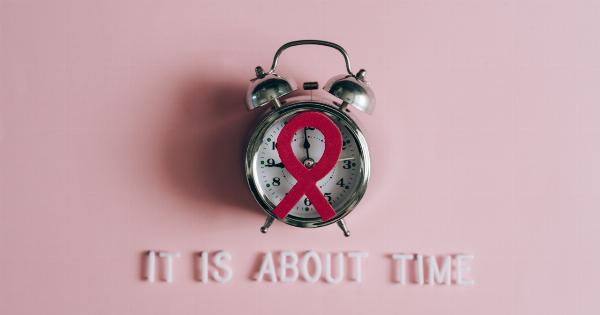World AIDS Day is observed on December 1 every year to show support for people living with HIV/AIDS. This day is also an opportunity to educate people about the risks of HIV transmission and to dispel common myths associated with the disease.
One of these myths is the idea that HIV can be transmitted through saliva. In this article, we will explore this myth and provide some facts about how HIV is actually transmitted.
What is HIV?
Human Immunodeficiency Virus (HIV) is a virus that attacks the immune system. It weakens the body’s ability to fight off infections and diseases. HIV can be transmitted from one person to another through contact with certain bodily fluids.
These fluids include blood, semen, vaginal fluids, and breast milk.
Myths vs. Facts: Saliva and HIV Transmission
There is a common belief that HIV can be transmitted through saliva. However, this is a myth. HIV cannot be transmitted through saliva, and it is not present in the saliva of infected people.
Saliva does not contain enough of the virus to cause transmission. In fact, HIV is a fragile virus that cannot survive outside the body for long periods of time.
There are some situations where saliva can potentially transmit HIV, but these are rare.
For example, if a person has bleeding gums or sores in their mouth, and another person has a cut in their mouth, there is a small risk of HIV transmission through oral contact. However, this risk is considered very low and can be minimized by practicing safe oral sex and avoiding activities that may cause bleeding in the mouth.
It is important to note that while HIV cannot be transmitted through saliva, other viruses such as hepatitis B and C, as well as herpes, can be transmitted through saliva.
It is important to practice safe sex and avoid sharing personal items like toothbrushes or razors to prevent the transmission of these viruses.
How is HIV Transmitted?
HIV is transmitted through specific bodily fluids, as mentioned earlier. The most common ways HIV is transmitted are:.
- Unprotected sexual contact with an infected person
- Sharing needles or syringes with an infected person for injecting drugs
- Mother to child transmission during pregnancy, childbirth, or breastfeeding
HIV can also be transmitted through blood transfusions or organ transplants. However, this is very rare as all donated blood and organs are screened for HIV and other infections before use.
Preventing HIV Transmission
The best way to prevent HIV transmission is to practice safe sex and avoid sharing needles or other equipment for injecting drugs. This can reduce the risk of contracting or spreading HIV and other sexually transmitted infections (STIs).
Use condoms correctly and every time you have sex. Condoms can also protect against other STIs such as chlamydia, gonorrhea, and syphilis. If you inject drugs, use a clean needle and syringe every time.
Do not share needles or other equipment as this increases the risk of HIV transmission and other infections.
If you are pregnant and living with HIV, seeking medical care and taking antiretroviral medications can greatly reduce the risk of transmitting HIV to your baby.
Similarly, if you are breastfeeding and living with HIV, taking medications can also reduce the risk of transmission to your baby.
Conclusion
World AIDS Day is an important reminder to us all that HIV and AIDS are still significant public health concerns. It is important to dispel myths about HIV transmission to reduce stigma and discrimination faced by people living with HIV.
While HIV cannot be transmitted through saliva, it is important to practice safe sex and take other precautions to reduce the risk of HIV transmission. Everyone has a role to play in preventing the spread of HIV, and it begins with educating ourselves and others.




























